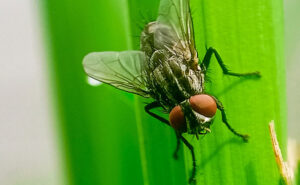
The New World screwworm fly. (Photo: Ramdan Fatoni / iStock / Getty Images / Getty Images Plus)
The New York Post reported that Texas wildlife officials are on the lookout for the New World screwworm flies (Cochliomyia hominivorax, or NWS) after cases of the cattle-killing vermin were recorded in Mexico.
The Texas Parks and Wildlife Department issued a statement asking hunters and outdoor enthusiasts in South Texas to watch out for the “man-eater,” whose larvae are known to enter wounds and body cavities and eat victims alive.
The warning came after a cow at an inspection checkpoint in the Mexican state of Chiapas, near Guatemala, was found to have the flesh-eating NWS maggots.
“Those who enjoy Texas’ natural resources have the opportunity to serve as the first line of defense to protect wildlife, livestock and human health,” TPWD Wildlife Veterinarian Dr. J Hunter said in a newss release. “Their eyes and ears will be critical to quickly responding to and managing this threat.”
Per the Centers for Disease Control and Prevention (CDC), NWS are attracted to and lay their eggs on and in open wounds and mucous membranes.
“The name screwworm refers to the feeding behavior of the larvae (maggots) as they burrow (screw) into healthy tissue,” a CDC webpage devoted to the fly states. “NWS larvae cause extensive damage by tearing into the host’s tissue with sharp mouth hooks. The wound can become larger and deeper as more larvae hatch and feed on living tissue. As a result, NWS can cause serious damage to the animal or person it infects. Bacterial superinfection can also occur because of the NWS infestation.”
While the NWS primarily attack livestock, birds, deer and humans can also be infected.
The news release also notes that NWS were eradicated from the United States in 1966 and eradication efforts have been ongoing in Central America. However, the pest is widespread in Cuba, Haiti, the Dominican Republic and South American countries. In 2020, Pest Management Professional columnist and Hall of Famer Dr. Austin Frishman, BCE-Emeritus (Class of 2002) wrote about early U.S. eradication efforts:
In the 1950s, the U.S. government used airplanes to drop tens of millions of sterile New World screwworm flies (Cochliomyia hominivorax) in an attempt to eliminate the pest where populations were killing cattle.
They focused first on Sanibel Island, Fla., then the state of Florida, and eventually the Texas-Mexico border. The sterile male screwworm population overwhelmed the target areas, and stopped successful mating.
Leave A Comment